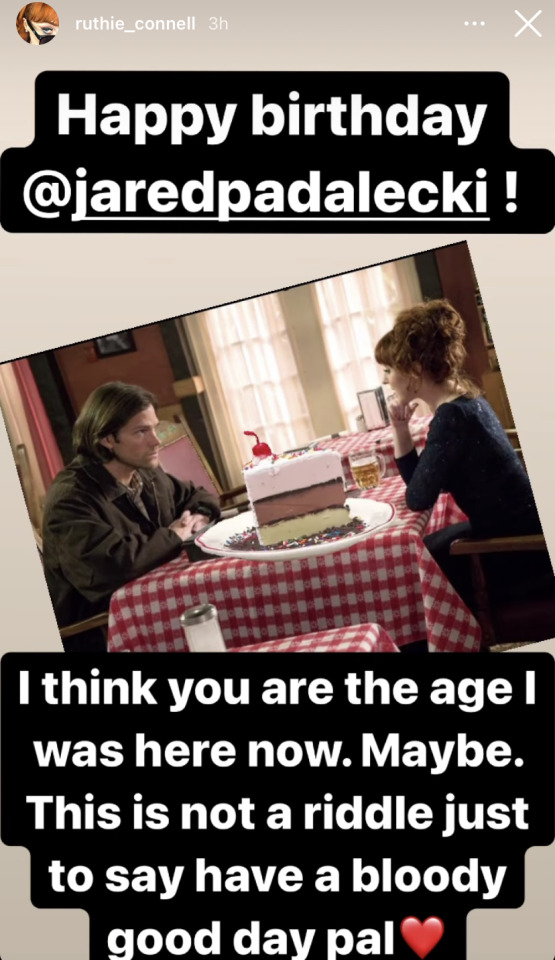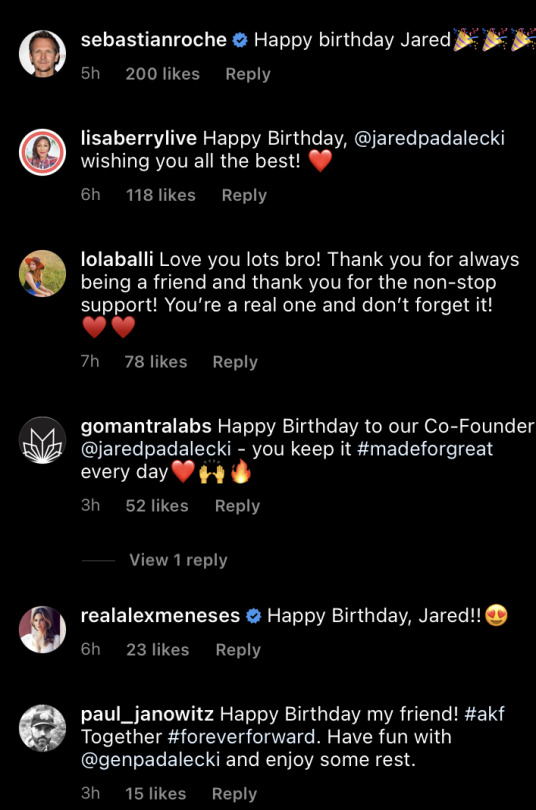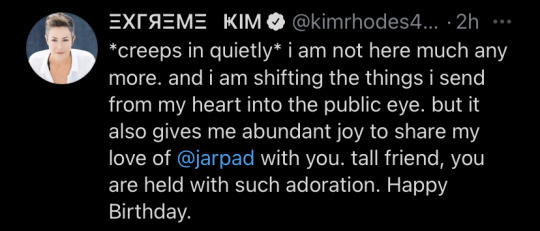#ruth blum
Text

#ocs#artists on tumblr#masks: a new generation#npcs#tony salvo#antonio salvo#ruth blum#ruth and tony#superheroes#she put his hands there otherwise he instinctively doesn't touch anybody in case his super strength accidentally destroys them#sigh...........#let's not talk about how pushing daisies put this “can not touch” archetype into my psyche for life#masks: overlook#masks: overlook city#my brainrot over the mentor npc is ridiculous but he ended up being my exact type of pathetic#checked this on my phone and they look so pale and washed out what is the truth
842 notes
·
View notes
Text
"The photographer had a camera strapped around one leg, attached to a cable that ran up his trouser leg and into a pocket. He could squeeze a bulb in his pocket to take one picture which would be unnoticed in the glare of sparks and the horror generated by the chair."
Deborah Blum, 'The Poisoner's Handbook' - how a photographer secretly took a picture of Ruth Snyder's execution.
#booklr#book blog#deborah blum#the poisoners handbook#photographer#ruth snyder#execution#new york daily news#book quotes#quotes
4 notes
·
View notes
Text
THE ACADEMY ELECTS 2022–2023 BOARD OF GOVERNORS

Newly elected Academy member Marlon West. Media image.
The Academy of Motion Picture Arts and Sciences today announced its newly elected 2022–2023 Board of Governors. The governors will take office at the first scheduled board meeting of the new term.
Elected to the Board for the first time:
Marlee Matlin, Actors Branch
Richard Hicks, Casting Directors Branch
Dion Beebe, Cinematographers Branch
Jason Reitman, Directors Branch
Chris Hegedus, Documentary Branch
Nancy Richardson, Film Editors Branch
Megan Colligan, Marketing and Public Relations Branch
Jason Blum, Producers Branch
Missy Parker, Production Design Branch
Marlon West, Short Films and Feature Animation Branch
Peter Devlin, Sound Branch
Paul Debevec, Visual Effects Branch
Incumbent governors reelected to the Board:
Ruth E. Carter, Costume Designers Branch
Donna Gigliotti, Executives Branch
Howard Berger, Makeup Artists and Hairstylists Branch
Eric Roth, Writers Branch
Returning to the Board after a hiatus:
Charles Fox, Music Branch

Photo source Instagram/DeVonFranklin.
They will join returning governors Pam Abdy, Kate Amend, Bonnie Arnold, Lesley Barber, Charles Bernstein, Susanne Bier, Jon Bloom, Gary C. Bourgeois, Rob Bredow, Brooke Breton, Paul Cameron, Eduardo Castro, Bill Corso, Teri E. Dorman, Tom Duffield, Ava DuVernay, Linda Flowers, DeVon Franklin, Rodrigo García, Whoopi Goldberg, Lynette Howell Taylor, Larry Karaszewski, Laura C. Kim, Christina Kounelias, David Linde, Isis Mussenden, Stephen Rivkin, Howard A. Rodman, Terilyn A. Shropshire, Kim Taylor-Coleman, Wynn P. Thomas, Jennifer Todd, Jean Tsien, Mandy Walker, Rita Wilson, Janet Yang and Debra Zane.
As a result of this election, the Board comprises 54% women and 28% belonging to an underrepresented racial or ethnic group.
The Academy’s 17 branches are each represented by three governors, who may serve up to two three-year terms (consecutive or non-consecutive), followed by a two-year hiatus, after which eligibility renews for up to two additional three-year terms, for a lifetime maximum of 12 years. The Board of Governors sets the Academy’s strategic vision, preserves the organization’s financial health, and assures the fulfillment of its mission.
For a complete list of the current 2021-2022 Academy governors, click here.
#Film#The Academy#academy of motion picture arts and sciences#Marlon West#Devon Franklin#Oscars#The Oscars#Board of Governors#Ruth E. Carter#Charles Fox#Donna Gigliotti#Eric Roth#Howard Berger#Ava DuVernay#Missy Parker#Jason Blum#RCV#Red Carpet View#naomi j richard#naomijrichard#Naomi Richard
0 notes
Text
The Feminist Library
-7000 Years of Patriarchy by Petra Ioana
-A Deafening Silence by Patrizia Romito
-Against Our Will by Susan Brownmiller
-Against Pornography by Diana E.H. Russell
-Against Sadomasochism by Robin Linden
-Ain’t I a Woman by Bell Hooks
-All Women Are Healers by Diane Stein
-Anti-Porn by Julia Long
-Anticlimax by Sheila Jeffreys
-Are Women Human by Catharine MacKinnon
-Backlash by Susan Faludi
-Bad Feminist by Roxane Gay
-Beauty and Misogyny by Sheila Jeffreys
-Beauty Sick by Renee Engeln
-Beauty Under the Knife by Holly Brubach
-Being and Being Bought by Kasja Ekis Ekman
-Beyond God the Father by Mary Daly
-Big Porn Inc by Melinda Tankard Reist and Abigail Bray
-Blood, Bread, and Roses by Judy Graham
-The Book of Women’s Mysteries by Z Budapest
-Borderlands by Gloria Anzaldua
-Burn it Down by Lilly Dancyger
-Butterfly Politics by Catharine MacKinnon
-Caliban and the Witch by Silvia Federici
-Choosing to Conform by Avelie Stuart
-The Church and the Second Sex by Mary Daly
-Cinderella Ate My Daughter by Peggy Orenstein
-Close to Home by Christine Delphy
-Compulsory Heterosexuality and Lesbian Existence by Adrienne Rich
-Conquest by Andrea Lee Smith
-Damned Whores and God’s Police by Anne Summers
-Daring to Be Bad by Alice Echols
-Dead Blondes and Bad Mothers by Sady Doyle
-Defending Battered Women on Trial by Elizabeth A. Sheehy
-Deliver Us from Love by Brogger
-Delusions of Gender by Cordelia Fine
-Detransition by Max Robinson
-The Disappearing L by Bonnie J. Morris
-Does God Hate Women by Ophelia Benson
-Doing Harm by Maya Dusenbery
-The End of Gender by Debra W. Soh
-The End of Patriarchy by Robert Jensen?
-Female Chauvinist Pigs by Ariel Levy
-Female Erasure by Ruth Barrett
-Female Sexual Slavery by Kathleen Barry
-Femicide by Jill Radford and Diane EH Russell
-Femininity by Susan Brownmiller
-Femininity and Domination by Sandra Lee Bartky
-Feminism Unmodified by Catharine MacKinnon
-Feminist Theory by Bell Hooks
-Firebrand Feminism by Breanne Fahs
-Flesh Wounds by Blum
-Flow by Elissa Stein and Susan Kim
-For Her Own Good by Barbara Ehrenreich
-For Lesbians Only by Sarah Lucia Hoagland
-Freedom Fallacy by Miranda Kiraly
-Gender Hurts by Sheila Jeffreys
-Getting Off by Robert Jensen?
-Global Woman by Barbara Ehrenreich
-Going Out of Our Minds by Sonia Johnson
-Going Too Far by Robin Morgan
-The Great Cosmic Mother by Monica Sjoo and Barbara Mor
-Gyn/Ecology by Mary Daly
-Gynocide by Mariarosa Dalta Costa
-Handbook of Feminist Therapy by Lynne Bravo Rosewater and Leonore E.A. Walker
-Heartbreak by Andrea Dworkin
-Her Body and Other Parties by Carmen Maria Machado
-The Hidden Malpractice by Gena Corea
-How to Suppress Women’s Writing by Joanna Russ
-I Am Your Sister by Audre Lorde
-I Hate Men by Pauline Harmange
-Ice and Fire by Andrea Dworkin
-In Defense of Separatism by Susan Hawthorne
-In Harm’s Way by Catharine MacKinnon
-In Search of Our Mothers’ Gardens by Alice Walker
-The Industrial Vagina by Sheila Jeffreys
-Inferior by Angela Saini
-Intercourse by Andrea Dworkin
-Invisible No More by Andrea J. Ritchie
-Invisible Women by Caroline Criado Perez
-Jewish Radical Feminism by Joyce Antler
-Kill All Normies by Angela Nagle
-The Laugh of Medusa by Helene Cixous
-Laughing with Medusa by Vanda Zajko and Miriam Leonard
-The Lesbian Heresy by Sheila Jeffreys
-Lesbian Nation by Jill Johnston
-Letters from a War Zone by Andrea Dworkin
-Love and Politics by Carol Anne Douglas
-Loving to Survive by Dee Graham
-Making Violence Sexy by Diana E.H. Russell
-Man Made Language by Dale Spender
-Man’s Dominion by Sheila Jeffreys
-Medical Bondage by Deirdre Cooper Owens
-Men Explain Things to Me by Rebecca Solnit
-Men Who Buy Sex by Melissa Farley
-Men Who Hate Women by Laura Bates
-Men Who Hate Women and the Women Who Love Them by Susan Forward
-Milk and Honey by Rupi Kaur
-Misogyny by Jack Holland?
-The New Handbook for a Post-Roe America by Robin Marty
-Nobody’s Victim by Carrie Goldberg
-Not a Job, Not a Choice by Janice Raymond
-Not for Sale by Rebecca Whisnant
-Nothing Matters by Somer Brodribb
-Objectification Theory by Barbara I. Fredrickson
-Of Woman Born by Adrienne Rich
-Only Words by Catharine MacKinnon
-Our Blood by Andrea Dworkin
-Our Bodies, Ourselves by Boston Women’s Health Book Collective
-Overcoming Violence Against Women and Girls by Michael L. Penn and Rahel Nardos?
-Paid For by Rachel Moran
-The Pimping of Prostitution by Julie Bindel
-Pimp State by Kat Banyard
-Policing the Womb by Michelle Goodwin
-Pornified by Pamela Paul
-Pornland by Gail Dines
-Pornography by Gail Dines
-Pornography: Men Possessing Women by Andrea Dworkin
-Pornography and Civil Rights by Andrea Dworkin and Catharine MacKinnon
-Pornography and Violence by Susan Griffith
-Pornography Values by Robert Jensen?
-Pure Lust by Mary Daly
-The Purify Myth by Jessica Valenti
-Quiverfull by Kathryn Joyce
-Radical Feminism Today by Denise Thompson
-Radical Feminist Therapy by Bonnie Burstow
-Radical Reckonings by Renate Klein
-Radically Speaking by Diane Bell...
-Rape by Susan Griffiths
-Rape in Marriage by Diana E.H. Russell
-Rape of the Wild by Ann Jones
-Refusing to Be a Man by John Stoltenberg?
-Right-Wing Woman by Andrea Dworkin
-A Room of One’s Own by Virginia Woolf
-Runaway Wives and Rogue Feminists by Margo Goodhand
-SCUM Manifesto by Valerie Solanas
-Selling Feminism by Amanda M. Gengler
-Sex Matters by Alyson J. McGregor
-Sexual Harassment of Working Women by Catharine MacKinnon
-Sexual Politics by Kate Millett
-Sexy but Psycho by Jessica Taylor
-She Dreams When She Bleeds by Nikki Taraji
-Sister Outrider by Audre Lorde
-Sisterhood is Forever by Robin Morgan
-Sisterhood is Global by Robin Morgan
-Sisterhood is Powerful by Robin Morgan
-Slavery Inc by Lydia Cacho
-Spinning and Weaving by Elizabeth Miller
-Surrogacy by Renate Klein
-Sweetening the Pill by Holly Grigg-Spall
-Taking Back the Night by Laura Lederer
-Talking Back by Bell Hooks
-Testosterone Rex by Cordelia Fine
-The Beauty Myth by Naomi Wolf
-The Creation of Patriarchy by Gerda Lerner
-The Dialectic of Sex by Shulamith Firestone
-The Feminine Mystique by Betty Friedan
-The First Sex by Elizabeth Gould
-The Legacy of Mothers: Matriarchies and the Gift Economy as Post-Capitalist Alternatives by Erella Shadmi
-The Lolita Effect by Gigi Durham
-The Man-Made World by Charlotte Perkins Gilman
The Porn Trap by Wendy Maltz
-The Prostitution of Sexuality by Kathleen Barry
-The Second Sex by Simone de Beauvoir
-The Sexual Liberals and the Attack on Feminism by Janice Raymond...
-The Spinster and Her Enemies by Sheila Jeffreys
-The Transsexual Empire by Janice Raymond
-The Women’s History of the World by Rosalind Miles
-This Bridge Called My Back by Gloria Anzaldua
-This is Your Brain on Birth Control by Sarah Hill
-Toward a Feminist Theory of the State by Catharine MacKinnon
-The Traffic in Women and Other Essays by Emma Goldman
-Trans by Helen Joyce
-Unbearable Weight by Susan Bordo
-Unpacking Queer Politics by Sheila Jeffreys
-Unscrewed by Jaclyn Friedman
-Unwell Women by Elinor Cleghorn
-The Unwomanly Face of War by Svetlana Alexievich
-The Vagina Bible by Jennifer Gunter
-A Vindication of the Rights of Woman by Mary Wollstonecraft
-The War Against Women by Marilyn French
-We Were Feminists Once by Andi Zeisler
-What Do We Need Men For by E. Jean Carroll
-When God was a Woman by Merlin Stone
-Who Cooked the Last Supper by Rosalind Miles
-Why Does He Do That by Lundy Bancroft
-Why Women Are Blamed for Everything by Jessica Taylor
-Why Women Need the Goddess by Carol P. Christ
-Wildfire by Sonia Johnson
-Witches, Midwives, and Nurses by Barbara Ehrenreich
-Witches, Witch Hunting, and Women by Silvia Federici
-Woman and Nature by Susan Griffith
-Woman Hating by Andrea Dworkin
-Woman-Identified Woman by Trudy Darty
-Women v. Religion by Karen L. Garst
-Women’s Lives, Men’s Laws by Catharine MacKinnon
-The Women’s Room by Marilyn French
177 notes
·
View notes
Text
so I was thinking about how Stanley and Patty never got to have kids and that’s so fucked up because they would have been amazing parents.
Stanley and Patty are definitely the first to have kids, Patty finding out she’s pregnant a little while after the losers defeat It. (Richie was actually there when they found out and has the moment on video.)
Since they have been trying for kids for a 24 years, the two are very prepared, they even have a nursery ready to go. During a check up they find out they’re having twins and call the losers to share the exciting news. Patty and Stanley don’t want to find out the gender because it doesn’t matter to them (I feel like after all this time they wouldn’t give a shit)
Patty goes into labor during a losers get together and is very chill about the whole thing, while Stanley is freaking out.
Stan: babylove we have to get to the hospital now
Patty: no I want to stop at *insert fast food place*
Richie: Staniel let the woman get her food
Stan: beep fucking beep
Eddie drives them to get food and then to the hospital. Richie is in the passenger seat, while Stan and Patty are in the back. (The 3 B’s and Mike take another car.) 13 hours later, Patty gives birth to 2 healthy babies a boy and a girl. The losers all crowd into the room to meet them. Stanley announces that their names are:
Maggie Ruth Blum-Uris
after his second mom and patty’s mother
Wren Michael Blum-Uris
after the man who gave up so much to stay behind.
Ok there will be a part 2 because I have too many ideas

#stanpat#stanley uris#patty blum uris#richie tozier#bill denbrough#eddie kaspbrak#the losers club#beverly marsh#mike hanlon#ben hanscom#it chapter two#it stephen king#Patty and Stanley deserve to be happy#the losers deserve to be happy#it headcanons
40 notes
·
View notes
Text
tagged to spell my url with songs by @brutaliakhoa & @salzundhonig thank you ^_^ 💌💌💌
t ruth hurts - lizzo
r uns in the family - amanda palmer
a frica - toto
n ine to 5 - dolly parton
s omewhere in between - your heart breaks
m iss me more - kelsea ballerini
i owa- mal blum
f lashed junk mind - milky chance
f orgiven/forgotten - angel olsen
y our best american girl - mitski
@covertblizzard @anurarana
#oh my god im so tired. i was spelling my url out and. i went t r a-- wait a minute. this words has trans in it!!!! before i remembered yeah#bc trans IS the word. my god. lol!!#AFRICA BY TOTO MY BELOVED. literally what sitting in the shower listening to that has gotten me thu 🤝🤝#this was great break from packing helped me destress thanks for tagging me!!! :333
2 notes
·
View notes
Text
NPC — RUTH BLUM

the one who got away. ruth was his perfect victim. she was strong, smart, spunky, and best of all a girl living alone at roseville, attending community college. she was his final victim, though she was never actually a victim. she’s the reason he was on the run in his final moments before the entity grabbed him. if it hadn’t been for her evading his attacks and fighting him off, he would have continued killing. instead, she was his final girl and the one he was most obsessed with, even in the entity’s realm.
#🔪 — npc.#🔪 — headcanon.#if anyone wants to make a blog for her and play her against me i will kiss you
2 notes
·
View notes
Text

Anthony Blum, Ruth Sobotka, Sara Letton, Edward Villella, Ann Boley and Janet Greschler in 1958 ph. Martha Swope
1 note
·
View note
Text
Award shines a spotlight on local science journalism
New Post has been published on https://thedigitalinsider.com/award-shines-a-spotlight-on-local-science-journalism/
Award shines a spotlight on local science journalism


Local reporting is a critical tool in the battle against disinformation and misinformation. It can also provide valuable data about everything from environmental damage derived from questionable agribusiness practices to the long-term effects of logging on communities.
Reporting like this requires more than just journalistic chops. It needs a network that can share these important stories, access to readers, and financial support. That’s why organizations like the Knight Science Journalism Program at MIT and its Victor K. McElheny Award are important.
Founded in 2018 with a gift from Knight Science Journalism (KSJ) Program founding director Victor McElheny and his wife, Ruth McElheny, the KSJ Victor K. McElheny Award rewards local science journalists for their pioneering work and their stories’ impacts.
“The prize can help illustrate a continuing contribution to the maximum level of public understanding of what technology and science are achieving, and what these achievements imply for humanity,” McElheny says.
The award comes with a $10,000 prize.
“Local science journalism has value, in part, because consolidation in this sector has meant fewer journalists and a shrinking pool of resources with which to do this important work,” notes editor Cathy Clabby, a Knight Science Journalism Fellowship Program alumna (2008). Clabby was part of the team at The Charlotte Observer and The Raleigh News and Observer that earned the McElheny Award in 2023 for its poultry farm investigation.
“The award demonstrated a commitment to high journalistic standards,” Clabby says.
These journalistic standards and the accompanying national recognition for awardees can lend further legitimacy to long-form science journalism.
Features and outcomes
Additionally, while some news outlets are starved of the resources necessary to produce deeply-researched, high-quality stories, receiving the McElheny Award can help raise the visibility of small and nonprofit newsrooms, which can help with circulation, operating expenses, and fundraising.
“The award has a very real value to our audience, especially as we develop our digital subscriber model,” notes journalist Tony Bartelme, one of several Charleston Post and Courier reporters whose feature on the Gulf Stream won the inaugural award in 2019. “If readers see this kind of national recognition, they’re more likely to see the value of subscribing.”
“The financial element of the award is certainly a delightful surprise, particularly for a team project like this with a small budget,” says journalist Aaron Scott, whose team at Oregon Public Broadcasting won for its “Timber Wars” podcast series in 2021. “It filled me with joy getting to tell my colleagues they’d be getting bonus checks in the mail.”
Deborah Blum — the Pulitzer Prize-winning director of the Knight Science Journalism Program and founder of Undark Magazine — argues that local and regional journalists play a central role in promoting science literacy and critical thinking skills among their readers. Blum describes an information ecosystem worthy of preservation, with local science journalism acting as a fundamental building block of public consciousness and shared understanding.
“Science stories told by reporters in the home community, known and trusted by their neighbors, have a special ability to reach readers and listeners,” Blum says.
Value, vision, and recognition
Storytelling has value beyond views, clicks, and shares, according to McElheny Award winners.
“An informed electorate helps ensure a functional and accountable government,” Clabby asserts.
Journalists point to the skills necessary to produce thoughtful, reasoned stories that can impact readers, communities, and other journalists as valuable assets for creating powerful pieces.
“Science journalism is hard to do because it takes time to wade through it all and understand the science with enough depth to tell the story properly,” Bartelme says. “But, what’s more important than a planet on fire?”
Further, recognition from their peers can serve as validation for what can sometimes become months of research and reporting to produce such important stories.
“Recognition [as evidenced by] the Victor K. McElheny Award is deeply rewarding,” Scott believes, “because it means some of our most accomplished and thoughtful peers are listening to, reading, and thinking deeply about a story we’ve invested so much in telling.”
Outcomes and impacts
The Victor K. McElheny Award for Local Science Journalism confers national recognition on journalists performing a critical function in producing an informed electorate. Local science journalism can have lasting impacts on readers, apprise audiences of advances and challenges related to science and technology, and help secure funding for current and future efforts.
“Fact-based journalism has value for audiences,” Clabby says.
Scott, noting the value of balanced science reporting, described science journalism as “both more important, and more under threat by politicization, than ever before.”
“The McElheny Award is really the only award that celebrates science stories that reach this important audience,” Bartelme concludes. “Local journalists have a special and often more intimate relationship with readers than national organizations.”
#000#2023#assets#Awards#honors and fellowships#Building#Community#Comparative Media Studies/Writing#consolidation#data#disinformation#effects#Environment#Environmental#Features#financial#form#Fundamental#Funding#Future#Government#Health#impact#Impacts#it#journalism#KSJ at MIT#listening#logging#mail
0 notes
Text
2023 Reading Challenges - It's A Wrap!


2023 Reading Challenges - It's A Wrap!
I am jumping the gun a little bit by posting this today. So, I have included the two books I will complete by the end of the week.
I am thrilled that I actually completed all, even exceeded some of the reading challenges I committed to this year.
It's amazing what you can accomplish
when your body stays reasonably healthy.
Hopefully, I can do the same in 2024.
I reviewed most of the books and each one listed is linked to my review.
There were a few I read from my personal bookshelf
so didn't write reviews.
Those books are linked to Amazon.
2023 Reading Challenge

LORI has
completed her goal of reading
175 books in
2023!
hide
202 of 175 (100%)
view books

A. Against the Currant by Olivia Matthews
B. Bookclubbed to Death by V.M. Burns
C. Canter With A Killer by Amber Camp
D. Dial M for Meow by Ruth J. Hartman
E. Engagingly Dead by Michele Scott
F. Four Leaf Cleaver by Maddie Day
G. The Game is a Footnote by Vicki Delany
H. Hidden in the Pines by Victoria Houston
I. The Ivy Tree by Carolyn Brown
J. Jasmine and Jake Rock the Boat by Sonya Lalli
K. Killer Cupid by Laurien Berenson
L. Lemon Curd Killer by Laura Childs
M. Murder at Wedgefield Manor by Erica Ruth Neubauer
N. The Name of the Rosé by Christine E. Blum
O. Of Mushrooms and Matrimony by Amy Patricia Meade
P. Pruning the Dead by Julia Henry
Q. Dairy Dairy Quite Contrary by Amy Lillard
R. Rivalry Gone Wrong by L.C. Turner
S. A Streetcar Named Murder by T.G. Herren
T. Tilling the Truth by Julia Henry
U. An Unholy Death by Leslie Budewitz
V. Viviana Valentine Get Her Man by Emily J. Edwards
W. Word to the Wise by Jenn McKinlay
X. Madame X by Niobia Bryant
Y. Your Time is Up by Kat Jorgensen
Z. Miss Zukas and the Raven's Dance by Jo Dereske
Complete 12/1/2023
Mini- Challenges
January - Seasons - Winter's End by Paige Shelton
February - Kitchen - Four Leaf Cleaver by Maddie Day
March - Girl/Lady/Woman - The Girl With the Dragonfruit Tattoo by Carrie Doyle
April - Flower - Digging Up Daisy by Sherry Lynn
May - Royalty - Earl Grey and the Shattered Graves by Victoria Tait
June - Position - Hidden Beneath by Barbara Ross
July - Baseball - Dame Alice Hits Hollywood by Allie Mahoney
August - Sky - The Solace of Stars by Kathleen Ernst
September - Territory - Anxious in Nevada by Diana Xarissa
October - I Spy - Pumpkin Spice Peril by Jenn McKinlay
November - Compound Word -Bulletproof Barista by Cleo Coyle
December - Christmas - Christmas, Criminals and Campers by Tonya Kappes

A. Amy Patricia Meade - Of Mushrooms and Matrimony
B. Laurien Berenson - Killer Cupid by Laurien Berenson
C. Amber Camp - Canter With A Killer
D. Vicki Delaney - The Game is a Footnote
E. Erica Ruth Neubauer - Murder at Wedgefield Manor
F. Sarah Fox - Six Sweets Under
G. Emily George - A Half-Baked Murder
H. T. G. Herren - A Streetcar Named Murder
I. Ian Moore - Death and Croissants
J. Jenn McKinlay - Word to the Wise
K. Michelle Hillen Klump - Murder Served Neat
L. Laura Scott - Dogged by Death
M. Maddie Day - Four Leaf Cleaver by Maddie Day
N. Nancy J. Cohen - Star Tangled Banner
O. Olivia Matthews - Against the Currant
P. Paige Shelton - Winter's End
Q. Mindy Quigley - Ashes to Ashes Crust to Crust
R. Ruth J. Hartman - Dial M for Meow
S. Michele Scott - Engagingly Dead
T. L.C. Turner - Rivalry Gone Wrong
U. Lisa Unger - All My Deepest Impulses
V. V.M. Burns - Bookclubbed to Death
W. Michele Pariza Wacek - Murder Among Friends
X. Diana Xarissa - Anxious in Nevada
Y. Samara Yew - Murder at the Seashore
Z. Chad Zunker All He Had Left
Complete - 10/5/2023

Alabama -
Read the full article
0 notes
Text
To the outrage of state officials, from the Sing Sing director to the governor, the front page of the next day’s New York Daily News was filled by a single photo: Ruth Snyder at the moment a surge of electricity ripped through her body.
The paper had imported a famously devious photographer form Chicago’s Tribune and sent him into the Death House posing as a writer. The photographer had a camera strapped around one leg, attached to a a cable that ran up his trouser leg and into a pocket. He could squeeze a bulb in his pocket to take one picture which would be unnoticed in the glare of sparks and the horror generated by the chair.
The photographer had muscled his way into the first pew and caught an unobstructed view of Ruth Snyder’s body rattling with electricity. The Daily News placed a single word over the photo: “Dead!” The picture was maybe a little grainy, but that only made it more exciting. The paper sold more than 1.5 million extras of that edition. Fearing that is prized photographer, Tom Howard, might be arrested, the Chicago paper sent him straigth from New York to an assignment in Cuba. As he related later, a group of Marines there recognized his name—he’d become temporarily nearly as infamous as the subject of his photograph.
—The Poisoner's Handbook by Deborah Blum
#writeblr#bookblr#books#book quotes#quotes#the poisoner's handbook#deborah blum#the poisoner's handbook by deborah blum#the poisoner's handbook quotes#jamietukpahwriting
1 note
·
View note
Text

164 notes
·
View notes
Text
Race Conscious Admissions and the Implications of SFFA v Harvard
By Agosto Aliaga, Claremont McKenna College Class of 2024
June 5, 2023

Though largely avoiding national headlines, the Supreme Court is due to make a decision this month on Students for Fair Admissions v. President and Fellows of Harvard College. The case bears major implications on the college admissions process, and could take down affirmative action in higher education altogether. The question the justices must answer is: may institutions of higher education use race as a factor in admissions?1
Both race in schools and more broadly affirmative action hold a storied history in the supreme court. The two landmark cases headlining the issue are Plessy v. Ferguson (1896) which infamously implemented the “separate but equal” doctrine, and Brown v. Board of Education (1954) which reversed Plessy, ruling segregation unconstitutional and for states to end segregation with “all deliberate speed.2 The precedent more closely relating to SFFA v. Harvard dates back to 1978 in Regents of University of California v. Bakke. The decision ruled that affirmative action was constitutional, but school’s individual quota systems mandating a certain number of students from a certain racial group to be admitted was unconstitutional. In Bakke the court ruled that race could be used when considering an application but it must only be a plus, and it must be one of many factors considered.3 The cases setting the modern precedent for race-conscious admissions are Grutter v. Bollinger (2003) and its sister case Gratz v. Bollinger (2003). Both cases were lawsuits against the University of Michigan’s admissions system. Gratz found that the university’s point-based admissions system was unconstitutional because the significant headstart they gave to minorities did not consider race on an individualized basis. Grutter on the other hand upheld the basic concept backing affirmative action. The court ruled that admissions officers could consider race as long as it was “narrowly tailored” and used in an individualized way which only saw race used as a plus.4 Interestingly enough, in her opinion in Grutter, Justice Sandra Day O’connor she famously predicted that “25 years from now,” the “use of racial preferences will no longer be necessary” in the admissions process. While Grutter remains as the established modern precedent, one other significant race-conscious admissions case reached the Supreme Court between 2003 and the present. After being denied admission to the University of Texas in 2008, a white woman sued over the university’s race-conscious admissions policy in what was “widely seen as an attempt to overturn” Grutter. The Supreme Court first heard the case in 2013 where it sent it back to a lower court, then heard the case again in 2016. Ultimately, the Court ruled in favor of the university in Fisher v. University of Texas by a vote count of 7-1, with only Ruth Bader Ginsburg dissenting. The majority found that the use of racial classifications is constitutional as long as “workable race-neutral alternatives do not suffice.”5 Although seemingly unlikely for the Court to reverse its ruling only 7 years later, the altered makeup of the court with four new justices in Gorsuch, Kavanaugh, Coney Barrett, and Jackson may lead to an alternate outcome. Further, with just 5 years remaining on O’Connor’s pressuring prediction for the feasibility of race-conscious admissions, justices may feel forced to alter the standing precedent as soon as possible.
SFFA v Harvard dates back to 2014 when the Students for Fair Admissions (SFFA), spearheaded by activist Edward Blum, sued Harvard alleging that their admissions policies discriminated against Asian American applicants.6 The SFFA concurrently sued the University of North Carolina in a very similar lawsuit, but the Harvard case is anticipated to yield a much more impactful decision. Blum and the SFFA claim that Harvard’s race-conscious admissions policies result in a violation of Title VI of the Civil Rights Act of 1964.7 Title VI states that “No person in the United States shall, on the ground of race, color, or national origin, be excluded from participation in, be denied the benefits of, or be subjected to discrimination under any program or activity receiving Federal financial assistance.”8 The SFFA, the plaintiff in the case, argues that when Harvard applies their holistic approach (or race conscious approach) to evaluating potential students, Asian American students are negatively affected. Cameron T. Norris, the lawyer presenting the plaintiff's oral argument in the Supreme Court, conveys that the precedent established in Grutter v. Bollinger only allows for race to be used in a “narrow tailored way” and only in a manner that would be a “plus” to applicants, however Harvard now uses it as a minus for Asians. Further, Norris argues that according to their objective qualifications, Asians should be getting into Harvard more than whites, but they do not because Harvard gives Asians a “significantly lower personal rating,” ranking them as “less likable, confident, and kind, even though the alumni who actually meet them disagree.” The SFFA frequently parallels Harvard’s present day treatment of Asians to their notorious efforts in thwarting the Jewish population at their school in the 30s.9 Norris finds that race conscious admissions has gone a step too far in the modern era, and pleads with the justices to deliver a new ruling protecting groups harmed by affirmative action. Although adamantly against the negatives race conscious admissions establishes, Norris does not support race outright race consideration bans. He stipulates that race and race alone cannot be considered, and that it ought never to be used as a negative. The route Norris and the SFFA devises to accomplishing this goal is to eliminate the ‘check-a-box’ to identify your race prompt. He contends that for schools to read that a person is “hispanic or black or asian” and blindly “credit that” is unconstitutionally. However, a school could credit something “unique and individual in what they wrote.” Norris finds that applicants should absolutely be credited for overcoming challenges or obstacles in their life stemming from their race. He emphasizes the indubitably impactful role race plays in individuals’ identities and lives, but that these very crucial and worthy experiences ought to be articulated in an essay on the application and not by just checking a box.10 Altogether, the SFFA aims to remove the precedent set in Grutter, eliminate the negative affects race possesses in the admissions process, and to remove race alone as a component of the holistic admissions process.
Beyond these concrete deliverables the plaintiff wishes for the Supreme Court to rule on, the plaintiff also suggests an alternate route to achieving a “robust, dynamic” diverse community through an approach they call “simulation D.” The simulation Norris presents revolves around a diverse socioeconomic background, he reveals that under their hypothetical application review method the percentage of economically advantaged students would go from 82% to 51%.11 Norris admits the methodology is certainly in the beginning stages and still needs improvement, but highlights how moving into the future socioeconomic status ought to play a more pivotal role in securing diversity on campuses across the country. The SFFA finds that if race conscious admissions are found unconstitutional, socioeconomic status may potentially play as a comparable substitute for race.12
The argument stemming from the other side of the bench is more easily summarized. Harvard relies on past precedent from Grutter and Fisher as well as the benefits of diversity in an academic setting to back race-conscious admission policies. Harvard, obviously admits that they account for race as a factor in applications, but argues that it does not result in discrimination. Their team of lawyers broke this down by revealing their exact admissions process. Out of the school’s now 60,000 average yearly applicants, Harvard finds 25% of them are fully qualified and would succeed if admitted. However, the school only has space to accommodate 3-4% of applicants, not 25%. The lawyers explained in their testimony that Harvard is forced to then take the fully qualified 15,000 and cut this number down to about 1900 students. Throughout the process the school may significantly alter the demographics of the group, where the fully qualified group may feature a much higher percentage of Asians compared to the fully qualified group. Harvard argues that while it may appear that Asians are punished in this process, they aim to create both a populous which represents America’ demographics, as well as a populous that best fosters a diverse and stimulating learning environment. They find that the race-conscious admissions process is crucial in creating the most “robust, dynamic” community possible where students can best learn from each other.13
As the decision draws nearer, all of higher education is watching. A ruling which overturns the precedent set in Grutter will hold drastic impacts on colleges and universities across the nation. The prohibition of race-conscious admissions policies will almost certainly result in an increase to the number of Asian American and White students admitted to selective institutions while likely guaranteeing a reduction in the number of Black and Hispanic students.14
______________________________________________________________
Agosto Aliaga is a student-athlete dual majoring in Government and Economics at Claremont McKenna College.
______________________________________________________________
1. https://www.oyez.org/cases/2022/20-1199
2. https://americanhistory.si.edu/brown/history/6-legacy/deliberate-speed.html
3. https://www.npr.org/2022/11/01/1132935433/supreme-court-affirmative-action-history-harvard-admissions-university-carolina
4. https://www.npr.org/2022/11/01/1132935433/supreme-court-affirmative-action-history-harvard-admissions-university-carolina
5. https://www.npr.org/2022/11/01/1132935433/supreme-court-affirmative-action-history-harvard-admissions-university-carolina
6. https://news.harvard.edu/gazette/story/2022/04/demystifying-harvards-admission-process/
7. https://www.lawyerscommittee.org/students-for-fair-admissions-sffa-v-harvard/
8. https://www.archives.gov/milestone-documents/civil-rights-act
9. https://www.oyez.org/cases/2022/20-1199
10. https://www.oyez.org/cases/2022/20-1199
11. https://www.oyez.org/cases/2022/20-1199
12. https://news.harvard.edu/gazette/story/2022/04/demystifying-harvards-admission-process/
13. https://news.harvard.edu/gazette/story/2022/04/demystifying-harvards-admission-process/
14. https://www.nytimes.com/2022/01/24/us/politics/supreme-court-affirmative-action-harvard-unc.html
0 notes
Text
Episode 366
Comic Reviews:
DC
Olympus Rebirth by Becky Cloonan, Michael Conrad, Caitlin Yarsky, Jordie Bellaire
Tales of the Human Target by Tom King, Greg Smallwood, Mikel Janin, Kevin Maguire, Rafael Albuquerque, Dave Stewart, Alex Sinclair, Arif Prianto
Marvel
A.X.E. Judgment Day 3 by Kieron Gillen, Valerio Schiti, Marte Gracia
Damage Control 1 by Hans Rodionoff, Adam Goldberg, Charlotte Fullerton, Will Robson, Ruth Redmond, Jay Fosgitt
Fantastic Four 46 by Dan Slott, Cafu, Jesus Aburtov
ComiXology
New America 1 by Curt Pires, Lucas Casalanguida, Mark Dale
Dark Horse
Minor Threats 1 by Patton Oswalt, Jordan Blum, Scott Hepburn, Ian Herring
Star Wars: Hyperspace Stories 1 by Amanda Deibert, Lucas Marangon
Boom
Magic: Ajani Goldmane 1 by Seanan McGuire, Ariel Olivetti
Wynd: Throne in the Sky 1 by James Tynion IV, Michael Dialynas
Dynamite
Dejah Thoris Fairy Tales by Ron Marz, Andres Labrada
Vault
End After End 1 by David Brian Andry, Tim Daniel, Sunando, Michael Russell
Archie
Big Ethel Energy by Keryl Brown Ahmed, Siobhan Keenan
Titan
Gun Honey: Blood for Blood 1 by Charles Ardai, Ang Hor Kheng, Asifur Rahman
Ray’s OGN Corner: The Witch Boy by Molly Knox Ostertag
Additional Reviews: She-Hulk ep2, Sandman, Nope, Game of Thrones, Daredevil by Charles Soule, Hamster and Gretel, Rage by Jimmy Palmiotti
News: More HBO cuts, Mr. Sinister event next year, Monica Rambeau mini-series, new Red Sonja movie, King Kong series on Disney+, bizarre new animated project, delays for Shazam 2 and Aquaman 2, Matt Shankman of WandaVision rumored as new FF director, Umbrella Academy gets fourth and final season, new head of DC film division, Omninews, Resident Evil cancelled, Wasp mini from Al Ewing, GoT gets a second season, Kyle Rayner Hispanic Heritage Month variant cover controversy
Trailers: Pinocchio
Comics Countdown:
Tales of the Human Target by Tom King, Greg Smallwood, Mikel Janin, Kevin Maguire, Rafael Albuquerque, Dave Stewart, Alex Sinclair, Arif Prianto
Wynd: The Throne in the Sky 1 by James Tynion IV, Michael Dialynas
Deadly Class 55 by Rick Remender, Wes Craig, Lee Loughridge
Radiant Black 17 by Kyle Higgins, Marcelo Costa, Igor Monti
Swamp Thing 16 by Ram V, Mike Perkins, Mike Spicer
Department of Truth 20 by James Tynion IV, Martin Simmonds
Lonesome Hunters 3 by Tyler Crook
I Hate This Place 4 by Kyle Starks, Artyom Topilin, Lee Loughridge
TMNT: Armageddon Game – Opening Moves 2 by Tom Waltz, Fero Peniche, Ronda Pattison
Grim 4 by Stephanie Phillips, Flaviano, Rico Renzi
Check out this episode!
0 notes
Photo












Birthday Wishes for Jared Padalecki
#Jared Padalecki#ruth connell#lindsey morgan#sebastian roche#lisa berry#lola balli#mantra labs#alex meneses#paul janowitz#Candace Nelson#adrienne bosh#campbell ritchie#bri jenkins#billy mercer#kelly mickle#sandy molinare#Mehera Blum#melanie jacobs#jamie chandlee#kim rhodes#Billy Moran#felicia day#ty olsson#William Shatner#mark pellegrino#osric chau#charlie capen#odette annable
177 notes
·
View notes
Text



I Am the Pretty Thing That Lives in the House (2016) by Osgood Perkins
Book title: The Lady in the Walls by Iris Blum
#i am the pretty thing that lives in the house#osgood perkins#the lady in the walls#iris blum#oz perkins#ruth wilson#erin boyes#fictitious books#fictitious books in movies
88 notes
·
View notes